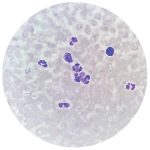Three years ago, an international task force of rheumatologists released recommendations for a treat-to-target approach to lupus management.5 These include that the target should be remission of systemic symptoms and organ manifestations, or when that target cannot be attained, patients should be treated until they reach the lowest possible disease activity measurement. Prevention of lupus flares was another target recommended by the task force. They also recommended that clinically asymptomatic patients should not be escalated on therapy solely on disease activity or serological activity, he said.
“What happens in our practices is that if patients come in with their concerns, such as a new symptom, we address those things. We must think about long-term treatment goals and the targets to set. This can be challenging,” he said. There are no clear, universally accepted definitions for lupus remission. “That makes it hard for us to develop a target.”
‘Increasingly, we see that the most severe complications may be avoided for many of our patients. But something is still missing.’ —Ronald van Vollenhoven, MD
Defining Remission
Another international task force, including rheumatologists, nephrologists, dermatologists and SLE patients, the DORIS Project, was formed to help define remission in lupus.6 “For a patient to be in remission, the clinical disease activity has to be really low or absent. Whether serology has to be normal is a matter of some dispute,” he said. “But the lupus patient in remission today could still flare tomorrow.”
The task force recognized that in such diseases s RA, patients can be in remission and still be on treatment, “but in lupus, this is tricky. They could be on prednisone, and that’s not an ideal situation for the long term. So there is still a question about which treatments are acceptable during remission.”
The task force also considered that there are different measures of lupus disease activity, including SLEDAI, BILAG and ECLAM. Ideally, these should be zero in patients in remission, “but these instruments may have gaps,” so these tests should be supplemented with a physical global assessment, said Dr. van Vollenhoven. It is also unclear how long a patient needs to maintain zero disease activity to be considered in remission, he said.
Most SLE patients are not reaching remission according to the DORIS definitions, but more may be able to achieve the Lupus Low Disease Activity State (LLDAS) defined by Australian rheumatologists in 2016, he said.7
“This is a little more relaxed definition compared to the remission definition. You can have a SLEDAI of up to 4. So it’s not remission, but this is a pretty good state to be in if you have lupus. When we talk about treating to target in lupus, we need to ask what that target is. Maybe it is this low disease activity state.

